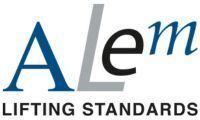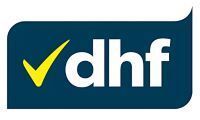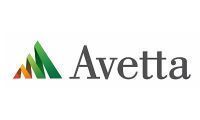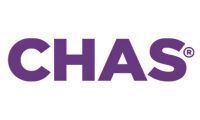- DHL Back in Action: Stertil Stokvis Engineers Complete Critical Dock Leveller Repair
- Wheel Guide Damage: Why It Happens And How To Avoid It
- How To Avoid The Hidden Costs Of Damaged Industrial Doors
- Dock Bumper Overrides: How To Container-Proof Your Loading Bay
- Loading Bay Maintenance: How to Comply with PUWER Regulations
- How Are Loading Bay Dock Levellers Maintained?
- Stertil Stokvis Loading Bay Door Repair Restores Operations After Forklift Collision
Loading Bay Maintenance: How to Comply with PUWER Regulations
07/06/24 | News 2024
Should you get your loading bay equipment and industrial doors serviced?
The short answer is yes.
The PUWER regulations, alongside other related health and safety legislation, determine your responsibilities regarding the maintenance and inspection of workplace equipment. This includes equipment in your loading facilities.
To help you understand the extent and frequency of such maintenance, we’ve created this handy guide, describing some of the key factors you need to consider:
WHAT IS PUWER?
PUWER stands for The Provision and Use of Work Equipment Regulations 1998.
In simple terms, the Regulations require that equipment in your workplace is safe, suitable for its intended use, and maintained in a safe condition. For equipment that poses a greater risk to employees' safety, regular inspections are also required.
As Regulation 5 of PUWER states:
“Every employer shall ensure that work equipment is maintained in an efficient state, in efficient working order and in good repair.”
Whilst ‘an efficient state’, ‘in efficient working order’ and ‘in good repair’ might appear similar, they mean different things.
Essentially, it's not enough to put things right when they fail or break down. Instead, routine and planned maintenance should be undertaken to minimise the possibility of any incidents occurring in the first place.
WHAT EQUIPMENT IS COVERED BY THE REGULATIONS?
The Regulations cover any equipment used in the workplace that could pose a risk to employee's health and safety. For loading bays, equipment covered by PUWER includes dock levellers, automatic vehicle restraints, and power operated industrial doors like overhead sectional doors and high-speed doors.
DOES PUWER APPLY TO YOU?
PUWER applies to any employer that provides equipment for use at work or has control of workplace equipment. While the Regulations don’t directly apply to employees, other legislation, such as the Health and Safety at Work Act 1974, does.
For example, Section 7 of the HSW Act states that ‘workers have a duty to take care of their own health and safety and that of others who may be affected by their acts or omissions at work.’ This includes informing their employer of anything that could compromise workplace safety, such as a damaged door or faulty control panel.
WHEN SHOULD LOADING BAY EQUIPMENT BE INSPECTED?
The frequency of inspections and maintenance is determined by PUWER Regulation 6.
Both the installation conditions, and exposure to conditions which may cause deterioration to equipment, should be considered when addressing the cadence of inspections.
What does this mean?
For installation conditions, work equipment should be inspected:
- After installation and before being put into service for the first time; or
- After assembly at a new site or in a new location, to ensure that it has been installed correctly and is safe to operate.
For work equipment exposed to conditions causing deterioration, which is liable to result in dangerous situations, equipment should be inspected:
- At suitable intervals; and
- Each time that exceptional circumstances which are liable to jeopardise the safety of work equipment have occurred, to ensure that health and safety conditions are maintained and that any deterioration can be detected and remedied in good time.
Regular risk assessments should identify the suitable interval of inspections, and equipment manufacturers' recommendations should also be followed.
WHAT LOADING BAY MAINTENANCE IS REQUIRED UNDER PUWER?
PUWER requires businesses to ensure that equipment is suitable for its intended use, properly maintained, and inspected routinely.
Under the Regulations, a ‘competent person’ should inspect and maintain equipment. This means someone that has sufficient training, experience, or knowledge of loading bay equipment. Realistically, due to the somewhat complex mechanical and electrical nature of loading bay equipment, only a specialist service engineer is likely to meet these requirements.
Inspections can take the form of full-service checks or visual-only compliance visits – the exact extent of inspections will depend on the potential risks associated with the work equipment.
SHOULD RECORDS OF INSPECTIONS AND MAINTENANCE BE KEPT?
Service records should be completed during every inspection and maintenance visit. These records should include the date, time, and details of checks and work undertaken. Whether in paper or digital form, records should be held securely and made easily available during emergencies for faster repair turnarounds.
On top of that, by identifying potential hazards, keeping records can help resolve issues early - prolonging equipment lifespan. Additionally, keeping service records supports better budgeting by allowing businesses to plan maintenance and repair expenditure.
PUWER COMPLIANCE
Regular, planned inspection and maintenance of your loading bay facilities helps your business comply with PUWER regulations. It also reduces the likelihood of accidents in your workplace, providing you with peace of mind.
Crucially, investing in regular maintenance extends the longevity of your loading bay facilities, protecting the value of your investment in dock levellers, dock doors, and other equipment.
USING STERTIL STOKVIS FOR LOADING BAY SERVICES
If you’re looking to service, repair, or maintain loading bay equipment, it pays to have a team of experts on your side.
We work with hundreds of businesses across the UK – from blue-chip retailers to leading facilities and maintenance companies.
So if you’re interested in speaking with a member of the team, send an email to helpdesk@stertil.co.uk or fill in the form on our contact page.
Contact Stertil on 0870 770 0471, option 2, option 4, or email helpdesk@stertil.co.uk.






